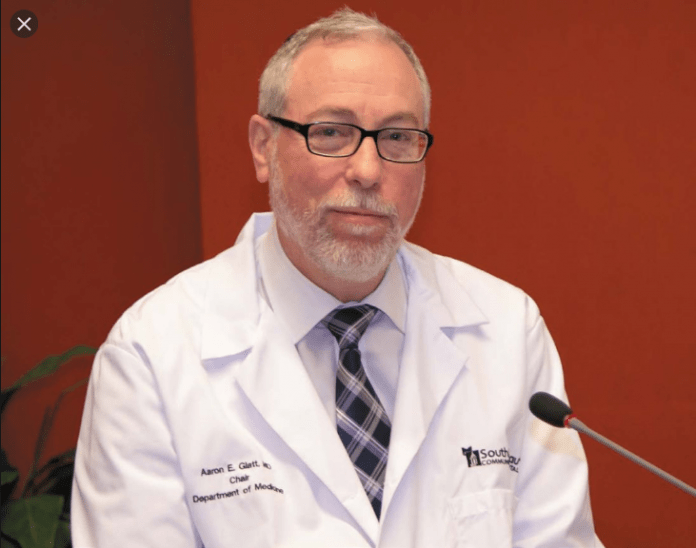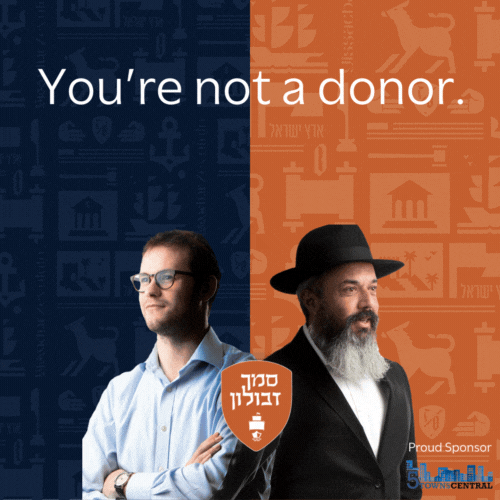In the past two weeks, I have been asked more quarantine and isolation questions than during the entire summer, so I am devoting much of this note to those subjects, as well as the queries I am already getting regarding “how will Succos look this year”. This motzei Shabbos, September 12th, our Zoom talk will begin at 9:00 PM. You can join the session via:
Zoom at Meeting ID 980 3243 6809; Password: SUMMER2020;
or by phone: 929 205 6099;
or via YouTube link obtainable from [email protected].
Obviously, there will not be a talk motzei Shabbos Rosh Hashana or Succos, but I have been asked and iy”H will give a motzei Shabbos zoom talk September 26th, start time to be determined.
““““““““““““““““““““““““““““““““““““““““““““““““““““““““““““““““
I have been amazed and bewildered at the number of physicians, educators and individuals who have contacted me regarding persons with symptoms who attended public events WHILE THEY HAD SYMPTOMS and are now asking for advice “what to do”.
Absolutely no one – not the ba’alei simcha, chavrusa, close relatives or friends – should EVER attend any public gathering while experiencing any symptoms. Even if you are masked and distanced, do not attend. Similarly, if you have been COVID-19 tested and are awaiting the results, do not attend. You MUST stay home under all circumstances till you are proven to be not contagious. This is not infection control 1.1 – this is the most basic level of ehrlichkeit.
Staying home keeps everyone else safe – and allows businesses, shuls and schools to remain OPEN safely. It also prevents the inevitable questions that impact so many people afterwards – was I exposed? Do I need to quarantine? What about my family?
It usually takes between 2 – 14 days for symptoms to develop after exposure to COVID-19. In some studies, infected patients were contagious an average of 4 days prior to developing symptoms, although many remain asymptomatic for the entire duration of their COVID-19 infection.
What does quarantine mean?
The CDC states that quarantine is used to keep people exposed to COVID-19 away from all others. Quarantine helps prevent spread of disease that can occur before a person knows they are sick and / or are infected with the virus without feeling symptoms. People in quarantine should stay home, separate themselves from others, monitor their health, and follow directions from their physician, state or local health department.
Quarantine means not being within 6 feet of anyone else during the entire period of time that you require quarantine. Ideally, you should be in a separate room / area using separate eating, bathroom and sleeping quarters from everyone else. Where that is simply not possible, you must be masked and distanced from the others living there as best as possible at all times.
Who should be in quarantine?
People who have been in close contact with someone who has COVID-19 MUST quarantine for 14 days. Not 8 days. Not 10 days. But 14 days. A negative test does not change anything.
The only exceptions are people who are recovered from recent COVID-19 (within 3 months) infection. People who tested positive for COVID-19 and Boruch Hashem recovered (see below for how long it takes to not be contagious) do not need to quarantine if exposed. They do not need to get tested again for up to 3 months – as long as they do not develop new symptoms. People who develop new symptoms within 3 months of their first bout of COVID-19 should be seen by their physician. Repeat testing may be indicated if there is no other cause identified for their symptoms.
What counts as “close contact”?
- You were within 6 feet of someone who has COVID-19 for a total of 15 minutes or more;
- You provided care at home to someone who is sick with COVID-19;
- You had direct physical contact with the person (hugged or kissed them);
- You shared eating or drinking utensils;
- They sneezed, coughed, or somehow got respiratory droplets on you.
If both parties were masked, then an exposure / close contact is usually not considered to be significant and quarantine is not needed. If only one person was masked, it is not clear what the risk is.
How do you count the 14 days of quarantine?
The 14 days start from the LAST exposure to a COVID-19 patient.
The CDC states that if you live with someone with COVID-19 and started a 14-day quarantine period, and then another household member gets sick with COVID-19, you need to restart a 14 day quarantine period from the last day you had close contact with anyone in your house who has COVID-19. Any time a new household member gets sick with COVID-19 and you had close contact, you will need to restart your quarantine. Hence, as possible, do not be near people in your house who have COVID-19.
If I test negative while in quarantine, can I stop quarantining?
Absolutely NOT. The CDC states: Even if you test negative for COVID-19 or feel healthy, you should stay home (quarantine) for the full 14 days since symptoms may still appear up to 14 days after COVID-19 exposure. Under rare circumstances, a physician may need to order retesting for a specific purpose.
If I have COVID-19, how long do I need to isolate? Do I need to re-test?
As an aside, we use the term “isolation” for people with COVID-19, as opposed to quarantine for people exposed to someone with COVID-19.
For most persons with COVID-19 illness, isolation and precautions can generally be discontinued 10 days after symptom onset and resolution of fever for at least 24 hours, without the use of fever-reducing medications, and with improvement of other symptoms. A limited number of persons with severe illness may produce replication-competent (“live”) virus beyond 10 days that may warrant extending duration of isolation and precautions for up to 20 days after symptom onset; consider consultation with infection control experts.
Retesting is usually not recommended within 3 months after the date of symptom onset for the initial COVID-19 infection unless specifically recommended by a physician for clinical reasons.
I am scared to go to my doctor’s office to get evaluated. What should I do?
A very reassuring study just published in Clinical Infectious Diseases demonstrated that hospital acquired COVID-19 is extremely rare. Very good news for people concerned about going to the hospital or their doctor for care. (That is assuming your doctor or dentist wears a mask and believes in infection control). These findings suggest that the overall risk of hospital-acquired COVID-19 was very low and that rigorous infection control measures are associated with minimized risk.
We have a wonderful group of physicians in our neighborhood who are committed to providing you with safe expert COVID-19 care. Please do not hesitate to call upon them for a telehealth or regular visit to assess your COVID-19 concerns and exposures. Everyone exposed, or indeed infected should be under a physician’s supervision even if a visit is not necessary. Monitoring is critical. Patients at all ages are at increased risk if they have co-morbidities. Two major underlying medical issues, obesity and hypertension, were just again documented in a JAMA paper as being predictors of more severe disease for even younger individuals.
Please follow these guidelines scrupulously as they are essential to prevent real serious illness – regardless of the incidence of COVID-19 in any neighborhood.
“““““““““““““““““““““““““““““““““““““““““““““““““““““““““““““““`
General Guidelines for Succos
Succos 5781 will be different than any other Succos celebrated in recent years. I will try and outline some of the changes and give my medical recommendations, noting again that each shul’s Rav must make all the final policy decisions for his kehilla. Last week I discussed attending shul, indoor and outdoor minyanim and general shul issues, so I will not repeat that discussion.
What about building the Sukkah?
I do not see any issues with a family living together putting up their sukkah together. Alternatively, if you are hiring someone to build your sukkah, as long as there is no mixing between “unbubbled” builders, the builders will not “contaminate” your sukkah walls. Enjoy the holy rarified atmosphere of the sukkah.
Can we have company in the Sukkah?
The general rules for mixing at meals apply just as well to a sukkah. While technically outdoors, sukkahs are enclosed much more than a typical outdoor setting, and I would be concerned with mixing unless there was adequate separation (at least 6 feet if not more) between family units.
People without a private sukkah who need to eat at a neighbor or in the shul sukkah should try and stagger meal times so as not to coincide as possible.
Is it safe to purchase arba minim (Lulav and Esrog)?
I am concerned that having multiple people congregating in and around an arba minim store (especially having multiple unmasked people touching the species), presents a very risky enterprise. Each shul needs to work out methodologies whereby full kosher four species sets can be purchased that are pre-checked by the Rav or a mumcheh (expert) and sold as is without individual examination by multiple people in close proximity. There can be several standards for different prices, but a system needs to be set up to minimize group exposures.
What about sharing arba minim?
People living together within the same family unit can share their arba minim with no concern for transmission. If someone from a different family unit needs to shake your lulav and esrog, they should wash their hands first, fulfill the mitzvah, return the set, and wash again afterwards. I would not recommend doing this with multiple people unless there was absolutely no other option.
How should we do hoshanos?
Walking around in a large space with appropriate distancing between the “hoshana walkers” poses little risk. Outdoors in general again is usually safer, but distancing (with masking of course) is the critical factor. Such spacing may not be available though in many facilities, and it may be necessary to alternate who “walks” the hoshanos while others recite them standing by their seats. This will be especially important for Hoshana Rabbah. I dare say that davening the hoshanos is far more important than walking.
What about hakafos?
The rules for hakafos are essentially identical as for hoshanos. Vigorous unmasked prolonged simchas Torah dancing in close proximity can be a super-spreader event and must be avoided. Again, slow appropriately masked and spaced dancing and singing is doable – depending on each facility’s physical constraints and crowds. Maybe this year we celebrate and demonstrate our love of Torah with a special shiur from the Rav, with the congregation masked and distanced instead of dancing wildly.
Can we do “duchening” (birkas Kohanim)?
Having the Levites wash their hands before handling the cup to wash the Kohanim is easy and practical advice, and allows multiple Levi’im to participate. Efficiency must be stressed to minimize lines and congregating amongst Kohanim and Levi’im.
During duchening, the Kohanim must be distanced; larger areas than usual in the front of the shul may need to be utilized.
What about shul appeals?
Tzedakah appeals can and should be performed as usual. I am such a meikal. I strongly recommend, for those able to do so, to donate more than usual, as many more people this year are in need of these tzedakah funds than in previous years.
Are Chol HaMoed trips safe?
Depending greatly on numerous factors, chol hamoed events pose numerous potential issues that may or may not be surmountable. Indoor events with poor ventilation and no masking or distancing are clearly out, but outdoor parks and hiking, especially with just the family unit and lots of open space are ideal. Everything else falls in between. Shul events with short trips on uncrowded busses to appropriate socially distanced events are certainly doable. It requires planning and attention to detail, and not all events from prior years will be kosher this Chol HaMoed.
What about sukkah hops?
Unfortunately, the prospect of large crowds congregating in small overcrowded sukkahs with unmasked people eating, is scary. However, having some sort of a Torah story-telling time for the children in a large outdoor shul tent without refreshments would be an acceptable social engagement.
Similarly, simchas beis hashoeva parties will need to be greatly curtailed or re-engineered in a suitable distancing and masked fashion this year to keep everyone safe.
Can we all get aliyot this Simchas Torah?
A very tough question. If multiple small groups of 10-12 masked people can gather around a sefer Torah (but not too close) and quickly all get an aliyah without excessive crowding or being in close proximity, maybe…
Same thing applies to kol hane’arim. Very difficult to do in a safe manner. Let each child stand by their father or mother and say the bracha at their places, and not all together under a canopy…
But if unable to do so this year, these beautiful customs will iy”H be observed next year in their full glory in a rebuilt Yerushalayim.
In the merit of our serving Hashem to the best of our ability this difficult COVID-19 year,
may we all merit a Kesiva vachasima tova and good Shabbos.













![Livestream: Emergency Tehillim & Chizuk by R’ Krohn [Chazaq]](https://5townscentral.com/wp-content/uploads/2024/04/chazq-11-100x70.jpg)




